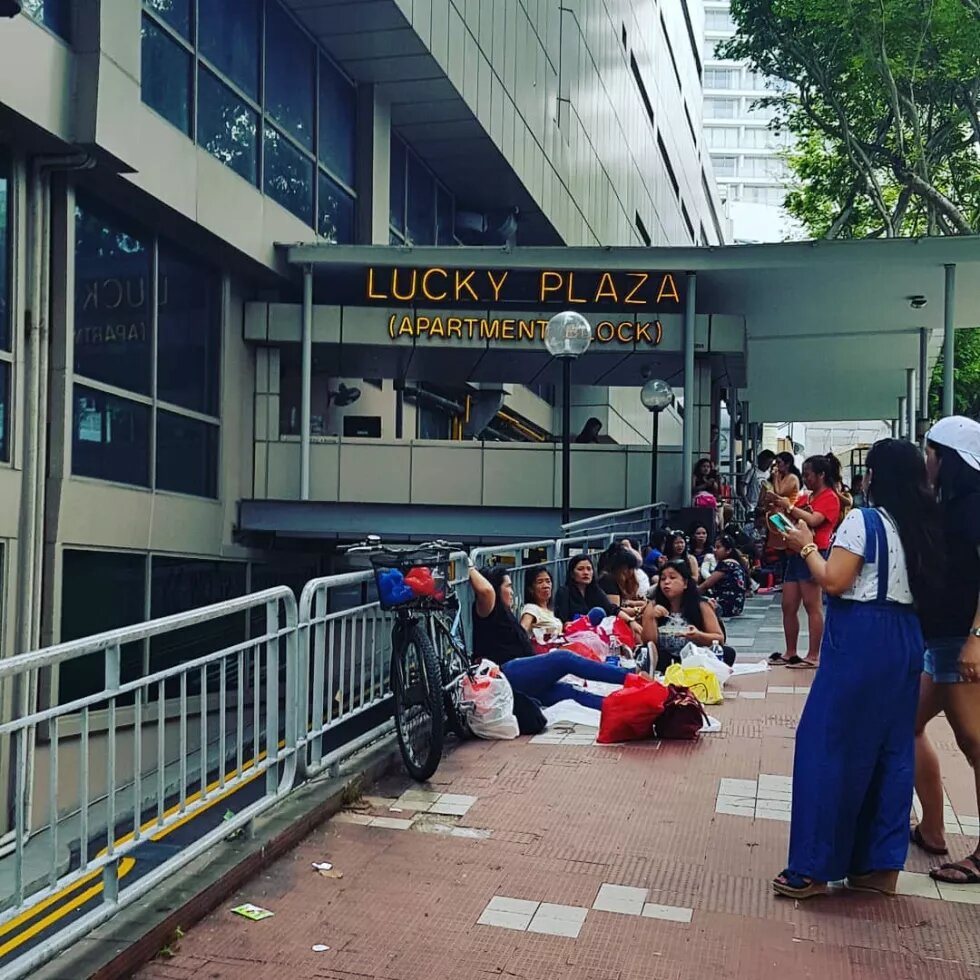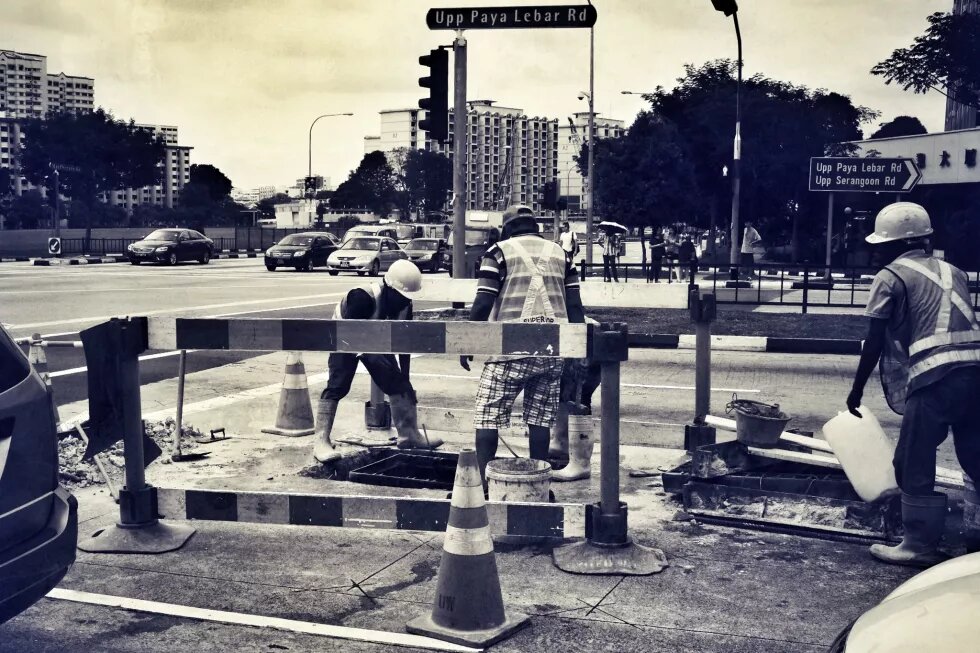
When news about the Coronavirus spreading rapidly in the migrant worker dormitories was reported in the media in early April 2020, it prompted a huge outcry from many Singaporeans. The mainstream media ran reports about workers living in conditions which were unsanitary and cramped.

A retired Singaporean diplomat wrote a facebook post, criticising how our treatment of foreign workers was third world, and not first world. He said that ‘Singapore should treat this as a wake up call to treat our indispensable foreign workers like a First World country should and not in the disgraceful way in which they are treated now.’[i] Condemnation was swift and many Singaporeans started questioning why migrant workers were treated so badly. A petition was soon set up and attracted over fifty thousand signatures within a week.
Whenever a crisis involving migrant workers happens, it leads to a soul searching exercise. In 2012, when over 100 bus drivers from transport operator SMRT went on strike[ii] because of pay discrimination, questions about pay inequity, poor living conditions, and the lack of protection from our government and unions were highlighted. The strike caused a stir in Singapore because it was the first industrial action in 26 years, with the one which happened before that being a government sanctioned strike. Twenty nine workers were eventually deported and four were convicted for instigating the strike. Questions about the way we treat migrant workers became a hot topic and was discussed in Singapore’s major media outlets and in parliament.
Similar questions about the exploitation of migrant workers were debated in the aftermath of a riot in 2013, which became known as the ‘Little India riot’[iii], an area in Singapore with a strong South Asian presence, that is popular with the country’s migrant workers. What sparked off the ‘riot’ was an accident involving a construction worker from India who died after being knocked down by a bus. According to some accounts, the workers who witnessed the accident were frustrated that little was being done to save their compatriot. It was as if the lives of Tamil migrant workers did not matter, which stemmed not just from their marginalised status in India itself but in Singapore where many of them faced systemic abuse and exploitation. The violence resulted in the conviction and deportation of almost one hundred workers. Even though a commission of inquiry did not attribute the violence to the poor treatment of migrant workers in the country, there was considerable discussion and debate about the marginalised status of South Asian migrant workers. Recognising that it was important to address these issues, the Commission made recommendations about how the rights and welfare of migrant workers in the country could be improved.
In both the ‘riot’ and the strike, very little progress was made in the area of migrant rights after the dust had settled. The State-linked bus company SMRT Ltd made some tweaks in their human resources policy and the then Minister of Manpower, Mr Lim Swee Say reported that the State run unions had recruited more bus drivers from China into their membership[iv]. But pressing issues such as pay discrimination, exploitative working conditions and the failure of the justice system to protect their rights remained unresolved. The Minister of Manpower went so far as to say that it was acceptable for workers from China to be paid less than Singaporeans and Malaysians because the exchange rate and cost of living was different in those countries. Similarly, the Little India riot resulted in the convening of a Commission of Inquiry but because of the politically sensitive nature of the riot, the independence of the Commission was compromised and many of the recommendations it made did not address the substantive issues of exploitation and discrimination.
As Singapore battles the pandemic, promises have been made by its Manpower Minister, Josephine Teo, who said that her government would look into the poor living conditions of the dormitories that many migrant workers are currently living in[v]. However, the slum-like conditions in which many workers live in is just one among many problems that workers face. Very little else has been said about what the government plans to do to improve the welfare of workers. In fact, the government is paying lip service to issues which concern workers the most at the moment: the security of their jobs and whether they will be paid for the period in which they have been forced out of work due to the pandemic. The Minister for National Development Lawrence Wong said: “We will take care of the migrant workers during this period when they are in quarantine. That’s our commitment. But once workers are recovered and are released to the workforce, whether or not they continue to work depends on the employers.”[vi] Migrant workers have also been excluded from aid and welfare packages which the government has implemented for Singaporeans.
How much hope is there for any significant progress in migrant worker’s rights? They are the first to be hired due to their low salaries and the first to be fired when a crisis hits because they are not citizens. The political will to improve their well-being is weak because elections are also not fought on the rights of non-citizens. The unions are also tightly controlled by the ruling party, with the labour movement showing little interest in ensuring they have equal rights and access to justice. Migrant workers themselves also find it difficult to be critical of the government and speak up for their own rights as they are not allowed to from their own unions, and face deportation and termination of employment if they incur the displeasure of the authorities. Foreigners are not allowed to gather at the Speaker’s Corner without explicit permission from the police, and it is the only space for collective dissent for anyone residing in Singapore. A foreigner’s work pass can be revoked if they engage in ‘immoral and undesirable activities’, as stipulated in the regulations.
Migrant rights advocacy in Singapore depends entirely on the country’s independent NGOs, many of whom face difficulty navigating a political landscape that is hostile to human rights and advocacy. The Worker’s Party was the only political party which talked about the rights of migrant workers. They called for better living conditions and the enforcement of higher working standards through a dedicated statutory board.
NGOs involved in advocacy typically do so through documentation, research, meetings with government officials and publicising issues affecting workers through the media. Most migrant groups are involved in providing social support services such as counselling, healthcare, food distribution, skills training programmes and sport and recreational activities. A few others provide legal aid, case work support, small cash grants and other practical assistance. Activism in a country where the majority of its citizens do not speak up for fear of getting in trouble with the authorities means that it is difficult to organise communities and other NGOs to pressure for change from the government. For any substantive progress to be made on social issues, campaigning for political freedom and civil rights has to be an integral part of civil society’s advocacy efforts. This is especially so for migrant workers and their advocates, who cannot depend on politicians to represent their interests. They will need the freedom to be able to organise themselves and push for reform. But the prospects for such freedoms are weak. Human Rights Watch has assessed Singapore’s political environment as ‘stifling’ where ‘freedom of speech is restricted through the use of broadly worded criminal laws and the use of civil lawsuits and regulatory restrictions.’[vii] A 2019 report by Civicus, an NGO which monitors civic space and freedom across the world, rated Singapore as ‘obstructed’ where the government has passed laws stifling free expression and cracks down on activists, media and politicians who are critical of the establishment.[viii]
There may be some promising signs: the country’s main opposition party, the Worker’s Party had a historic breakthrough when it won another constituency in a recently concluded election, increasing its seats in parliament[ix]. There was also an almost 10% decrease in support for the ruling party when the ruling People’s Action Party won 61.2 percent of the popular vote, compared to 69.86% in the 2015 elections. Even though such a result would have been a resounding victory in most democracies around the world, it was a milestone for the country’s opposition politicians, who for decades have been in the political wilderness. Even the ruling People’s Action Party acknowledged the results as an indication of the electorate’s desire for more diverse voices in parliament. It is not realistic to expect the ruling party to change its decades old habit of persecuting its critics. But hopefully, the recent results will send a signal to them that it should be more tolerant of critical voices and embolden the country’s civil society to press for greater reform.
__
References
[i] “Singapore migrant workers live in fear as virus hits dorms”. Bangkok Post, 09/04/2020 <https://www.bangkokpost.com/world/1896480/singapore-migrant-workers-live-in-fear-as-virus-hits-dorms>
[ii] “102 SMRT bus drivers protest against pay” The Straits Times, 27/11/2012
<https://www.straitstimes.com/singapore/transport/102-smrt-bus-drivers-protest-against-pay>
[iii] “Little India Riot: One Year Later - The night that changed Singapore”, The Straits Times, 06/12/2014 <https://www.straitstimes.com/singapore/little-india-riot-one-year-later-the-night-that-changed-singapore>
[iv] “75 per cent of SMRT's PRC drivers now union members” Royston Sim, The Straits Times. 04/02/2013 <https://www.straitstimes.com/singapore/75-per-cent-of-smrts-prc-drivers-now-union-members>
[v] “Josephine Teo promises to raise standards in foreign workers’ dormitories after Covid-19 crisis”, Anna Maria Romero. The Independent, 07/04/2020 < http://theindependent.sg/josephine-teo-promises-to-raise-standards-in-foreign-workers-dormitories-after-covid-19-crisis/>
[vi] Job security of migrant workers depends on employers, economy, Toh Wen Li. The New paper, 29/05/2020 <https://www.tnp.sg/news/singapore/job-security-migrant-workers-depends-employers-economy>
[vii] Human Rights Watch, <https://www.hrw.org/asia/singapore>
[ix] “Commentary: How the Workers’ Party won big this General Election”. Gillian Koh, Channel News Asia, 14/07/2020, https://www.channelnewsasia.com/news/commentary/ge2020-singapore-workers-party-won-big-pritam-singh-leader-wp-12928596
[x] "Myths and Facts: Migrant Workers in Singapore". Charan Bal, New Naratif, 09/09/2017. <https://newnaratif.com/research/myths-and-facts-migrant-workers-in-singapore/>



